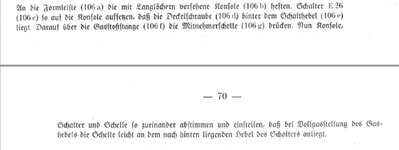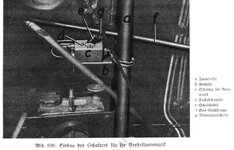Hi all,
I am wondering if anyone knows anything about an interconnect device somewhere in the throttle control linkages which would automatically move the airscrew control mode switch below the throttle quadrant from manual to automatic when the throttle was pushed all the way forward. The device could be folded out of the way so as not to move the switch if the automatic airscrew control was malfunctioning, but otherwise it was left in place, presumably to prevent over-speeding the engine at full throttle if the blade pitch had been left too fine. It is mentioned in the Bf 109F Bedienungsvorschrift-Fl dated May 1941, but I have no drawing showing how it moved or what it looked like. I assume it is something similar to a moveable version of the striker plate on the early Spitfire throttle quadrants that bumped the landing gear indicator switch to the on position when the pilot moved the throttle forward if he had forgotten to turn the indicator on beforehand. Thanks for any help.
I am wondering if anyone knows anything about an interconnect device somewhere in the throttle control linkages which would automatically move the airscrew control mode switch below the throttle quadrant from manual to automatic when the throttle was pushed all the way forward. The device could be folded out of the way so as not to move the switch if the automatic airscrew control was malfunctioning, but otherwise it was left in place, presumably to prevent over-speeding the engine at full throttle if the blade pitch had been left too fine. It is mentioned in the Bf 109F Bedienungsvorschrift-Fl dated May 1941, but I have no drawing showing how it moved or what it looked like. I assume it is something similar to a moveable version of the striker plate on the early Spitfire throttle quadrants that bumped the landing gear indicator switch to the on position when the pilot moved the throttle forward if he had forgotten to turn the indicator on beforehand. Thanks for any help.


